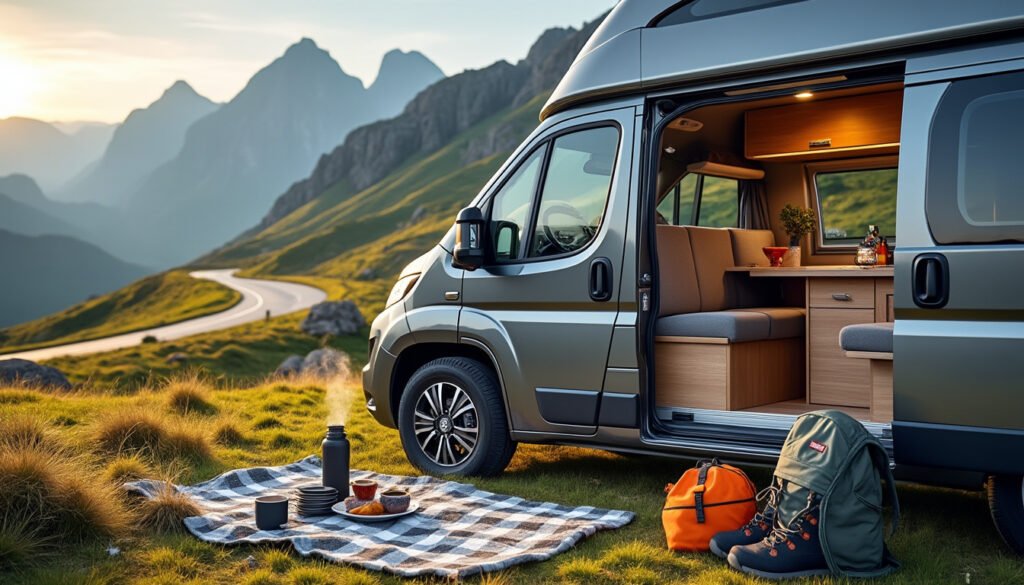How to Tie Down a Truck Like a Pro With These Foolproof Techniques
In the world of transportation, safety and efficiency are paramount, especially when it comes to securing a truck. Proper lashing is crucial to ensure the integrity of the cargo while preventing accidents. In 2025, as the transportation industry continues to evolve, mastering the art of lashing becomes essential for all professionals in the field. This article will guide you through essential techniques, mistakes to avoid, and practical tips to become a lashing pro. Leave nothing to chance; ensure your trip is safe and uneventful.
1. Understanding the Importance of Lashing
1.1. What is Lashing?
Securing a truck is the set of procedures designed to stabilize and immobilize cargo during transport. This operation requires the use of specific tools, such as straps, chains, and friction mats. Whether for Renault Trucks, Mercedes-Benz, or Scania trucks, lashing is an essential step to ensure that goods arrive safely at their destination.
1.2. The Risks of Improper Lashing
Improper lashing can lead to serious consequences such as road accidents, cargo loss, and physical damage to vehicles. Recent studies show that nearly 30% of transport accidents are caused by improper lashing. Freight transport, especially for heavy goods vehicles such as DAF and MAN trucks, must be carried out with the utmost care.
1.3. Benefits of Proper Lashing
- 💪 Secures the Cargo
- 🚚 Protects the Carrier and Road Users
- 💰 Saves Costs Related to Lost Goods
- 🕰️ Saves Time by Avoiding Frequent Checks
In this context, proper lashing not only protects the goods being transported, but also optimizes delivery times and reduces costs for transport companies such as those using Freightliner trucks.

2. Essential Lashing Techniques
2.1. Choosing Lashing Materials
To achieve effective lashing, the choice of materials is essential. There are several options, each with its own specificities depending on the nature of the goods to be transported.
2.1.1. Ropes and Straps: Comparison
| Material Type | Advantages | Disadvantages |
|---|---|---|
| Polyester Straps | ⚡ High strength, easy to handle | 🌧️ Sensitive to moisture |
| Polypropylene Ropes | 🌊 Water and corrosion resistant | 🧱 Less resistant to heavy loads |
2.1.2. Restraint Equipment: Types and Uses
Retaining equipment can include chains, locking systems, and ratchet devices. They are essential for securely securing cargo, particularly when transporting goods on Volvo Trucks or Iveco trucks.
2.2. Basic Securing Techniques
There are several methods for properly securing a load on a truck. Each has its own applications depending on the type of goods being transported.
2.2.1. Top-Loading
This technique involves placing straps over the cargo, which is particularly effective at preventing lateral movement. Friction mats are recommended in this case.
2.2.2. Bottom-Loading
This is the ideal method for heavy loads because it helps maintain a low center of gravity. Cables or chains are positioned under the load and anchored to the truck frame.
2.2.3. Cross-Tie-Down
This method is perfect for loads that tend to slip. The straps are crossed to create additional pressure, providing optimal stability and increasing safety.
3. Steps for Successful Tie-Down
3.1. Prepare the Load
3.1.1. Assess the Weight and Center of Gravity
Before loading anything, an accurate weight assessment is essential. Knowing the load capacity of your vehicle, whether it’s a Peterbilt truck or an Isuzu, helps you avoid overloading.
3.1.2. Cargo Layout
The placement of the cargo is also crucial. Place the heaviest items centrally and symmetrically to ensure better weight distribution. This will help stabilize the overall load.
3.2. Choosing the Location on the Truck
Each truck has specific lashing areas that must be properly utilized. Use the lashing points integrated into the chassis of Man and Scania trucks, as they are designed to provide optimal securing.
3.3. Securing Techniques
Use securing techniques adapted to your lashing equipment. For straps, ensure they are properly tensioned and that the locks are in place. Always reinforce with corners and angle irons to prevent wear on the straps.

4. Common Mistakes to Avoid
4.1. Incorrect Weight Assessment
A common mistake is underestimating or overestimating the weight of the load. This can lead to imbalance during transport and affect maneuverability. Take the time to weigh each load using a suitable scale.
4.2. Using the wrong equipment
- ❌ Not using the right type of equipment can compromise safety.
- 🔄 Damaged equipment should never be used.
- ⚖️ Adjust the tension to the load to be transported.
4.3. Neglecting pre-trip checks
Before setting off, make sure every item has been checked. A quick check can make all the difference. Major brands, such as Renault Trucks, recommend performing these checks at every stop.
5. Practical tips and tricks from professionals
5.1. Tips to improve efficiency
- ⏱️ Allow time for loading and securing. 🎯 Know the dimensions and weight of loads for more effective lashing.
- 🔧 Use aids, such as scissor lifts, for quick lashing.
- 5.2. Essential Tools for Professional Lashing
Here are the essential tools to ensure effective lashing:
🧰 Ratchet straps
- 🧱 Foam corners to protect against friction
- 🔒 Heavy-duty lashing hooks
- 5.3. Additional Resources and Continuing Education
To learn more about the art of lashing, online resources, such as this lashing blog, offer practical advice and training. Consulting specialized books is also highly recommended to stay informed about best practices.
FAQ What are the regulations on load lashing?Regulations require that loads be secured to prevent shifting during transport. Each carrier must refer to the applicable standards.
What equipment is recommended for securing a truck?
Recommended equipment includes straps, chains, friction mats, hooks, and foam wedges suitable for the loads to be transported.
How can safety be ensured during transport?
To ensure safety, it is essential to check the securing at every stop, use straps in good condition, and ensure a balanced load.
What are the consequences of improper securing?
Improper securing can lead to serious accidents, cargo loss, and injuries to drivers and road users.
Which trucks are most commonly used for freight transport?
The most popular brands include Renault Trucks, Mercedes-Benz, Volvo Trucks, and Scania, all of which offer high-performance and reliable options for freight transport.
Find out why the Mobilvetta K-Yacht Tekno Line 80 will revolutionize your camping vacation!
The world of camping is changing rapidly, and the Mobilvetta K-Yacht Tekno Line 80 is at the forefront of this revolution, redefining camping holidays like never before. With its sophisticated design and high-end features, this recreational vehicle brings unprecedented comfort,…

Find out why the Westfalia Columbus 601D will transform your road trips forever!
The Westfalia Columbus 601D camper van is much more than just a vehicle, it is a real invitation to escape. Whether you’re a seasoned adventurer or new to RV travel, this engineering marvel will revolutionize your road trips. Imagine traveling…
Find out why the Dethleffs Model 56 Ford 2.0L TDCi could change your idea of motorhomes!
Imagining your next road trip aboard a Dethleffs Model 56 Ford 2.0L TDCi is a truly unique travel experience. Motorhomes, often perceived as simple means of transportation, are quickly transforming into veritable homes on wheels, offering comfort and freedom. Whether…





